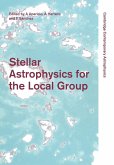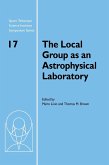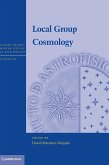This book deals with the effect of crystal symmetry in determining the tensor properties of crystals. Although this is a well-established subject, the author provides a new approach using group theory and, in particular, the method of symmetry coordinates, which has not been used in any previous book. Using this approach, all tensors of a given rank and type can be handled together, even when they involve very different physical phenomena. Applications to technologically important phenomena as diverse as the electro-optic, piezoelectric, photoelastic, piezomagnetic, and piezoresistance effects, as well as magnetothermoelectric power and third-order elastic constants, are presented. Attention is also given to 'special magnetic properties', that is those that require the concepts of time reversal and magnetic symmetry, an important subject not always covered in other books in this area. This book will be of interest to researchers in solid-state physics and materials science, and will also be suitable as a text for graduate students in physics and engineering taking courses in solid-state physics.
Table of contents:
1. Tensor properties of crystals: equilibrium properties; 2. Tensor properties of crystals: transport properties; 3. Review of group theory; 4. Linear relations treated group theoretically; 5. The magnetic point groups and time reversal; 6. Matter tensors of rank 0, 1, and 2; 7. Matter tensors of rank 3; 8. Special magnetic moments; 9. Matter tensors of rank 4 and 5; 10. Matter tensors of rank 6; Appendix A. Review of tensors; Appendix B. Stress, strain and elasticity; Appendix C. Finite deformation; Appendix D. The great orthogonality theorem; Appendix E. The symmetry-coordinate transformation tables for the 32 point groups and two infinite groups; Appendix F. Proof of the fundamental theorem; Appendix G. Theorems concerning magnetic groups; References.
Table of contents:
1. Tensor properties of crystals: equilibrium properties; 2. Tensor properties of crystals: transport properties; 3. Review of group theory; 4. Linear relations treated group theoretically; 5. The magnetic point groups and time reversal; 6. Matter tensors of rank 0, 1, and 2; 7. Matter tensors of rank 3; 8. Special magnetic moments; 9. Matter tensors of rank 4 and 5; 10. Matter tensors of rank 6; Appendix A. Review of tensors; Appendix B. Stress, strain and elasticity; Appendix C. Finite deformation; Appendix D. The great orthogonality theorem; Appendix E. The symmetry-coordinate transformation tables for the 32 point groups and two infinite groups; Appendix F. Proof of the fundamental theorem; Appendix G. Theorems concerning magnetic groups; References.








